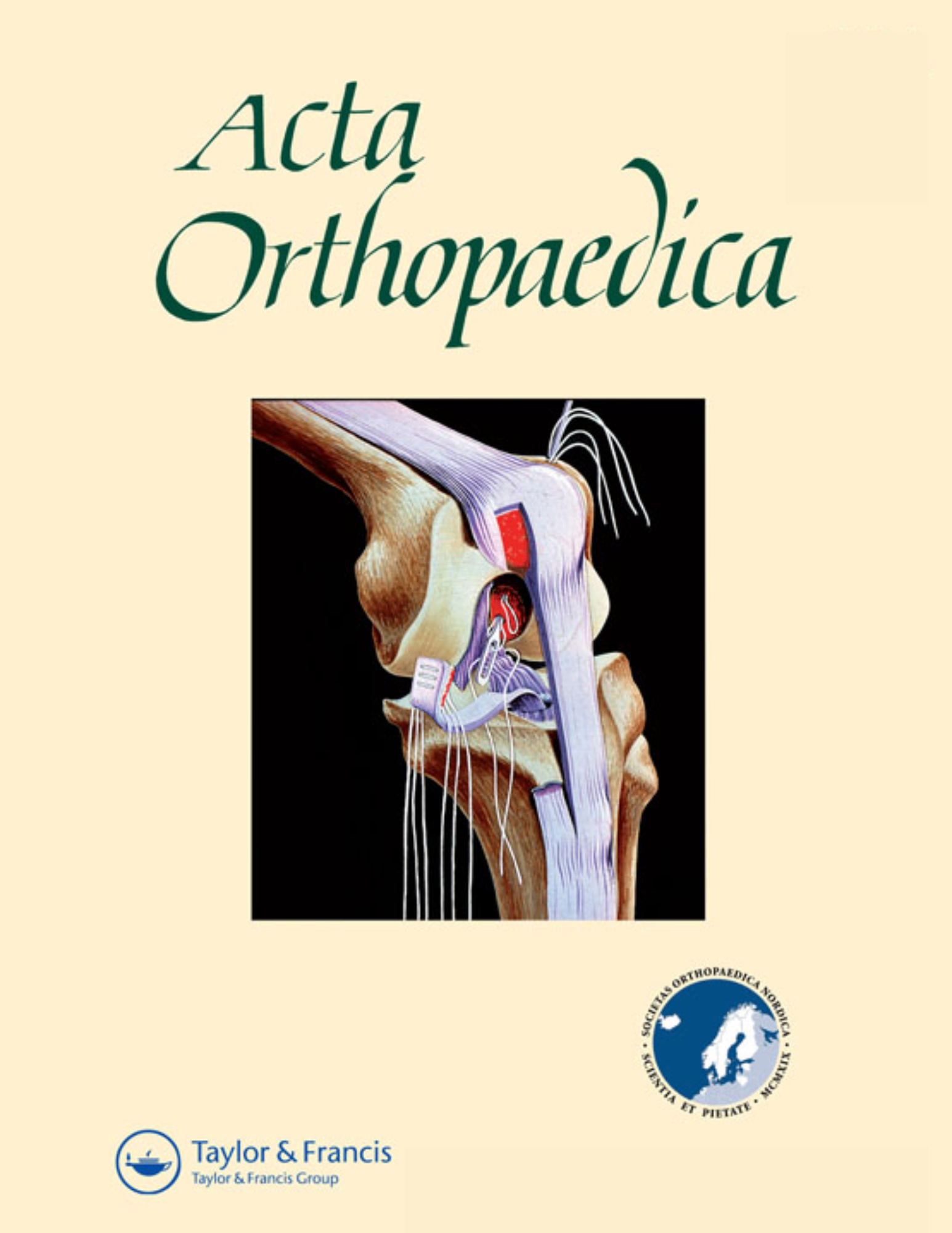
TKA: All-polyethylene and metal-back tibial components result in successful outcomes

TKA: All-polyethylene and metal-back tibial components result in successful outcomes
Metal-backed versus all-polyethylene tibial components in primary total knee arthroplasty
Acta Orthop. 2011 Oct;82(5):589-95. Epub 2011 Sep 6Did you know you're eligible to earn 0.5 CME credits for reading this report? Click Here
Synopsis
This meta-analysis and systematic review identified 9 randomized controlled trials that compared all-polyethylene (AP) tibial components to metal-backed (MB) tibial components in primary total knee arthroplasty. The results from this analysis demonstrate no significant difference in radiographic and clinical outcomes between both the AP and MB tibial component groups.
Were the search methods used to find evidence (original research) on the primary question or questions stated?
Was the search for evidence reasonably comprehensive?
Were the criteria used for deciding which studies to include in the overview reported?
Was the bias in the selection of studies avoided?
Were the criteria used for assessing the validity of the included studies reported?
Was the validity of all of the studies referred to in the text assessed with use of appropriate criteria (either in selecting the studies for inclusion or in analyzing the studies that were cited)?
Were the methods used to combine the findings of the relevant studies (to reach a conclusion) reported?
Were the findings of the relevant studies combined appropriately relative to the primary question that the overview addresses?
Were the conclusions made by the author or authors supported by the data and or analysis reported in the overview?
How would you rate the scientific quality of this evidence?
Yes = 1
Uncertain = 0.5
Not Relevant = 0
No = 0
The Reporting Criteria Assessment evaluates the transparency with which authors report the methodological and trial characteristics of the trial within the publication. The assessment is divided into five categories which are presented below.
4/4
Introduction
2/4
Accessing Data
4/4
Analysing Data
3/4
Results
2/4
Discussion
Detsky AS, Naylor CD, O'Rourke K, McGeer AJ, L'Abbé KA. J Clin Epidemiol. 1992;45:255-65
The Fragility Index is a tool that aids in the interpretation of significant findings, providing a measure of strength for a result. The Fragility Index represents the number of consecutive events that need to be added to a dichotomous outcome to make the finding no longer significant. A small number represents a weaker finding and a large number represents a stronger finding.
Why was this study needed now?
Tibial component design is an extremely important aspect related to implant failure in total knee arthroplasty. The metal-backed (MB) tibial component design is more commonly used in TKA and is believed to result in better outcomes compared to the use of an all-polyethylene (AP) design. The MB component is thought to have several advantages; however, it is more expensive and can increase wear and tensile stresses during eccentric loading. Although several randomized trials have been performed evaluating the effectiveness of the MB component, this data has not been systematically analysed in order to determine the benefits of the MB component for patients.
What was the principal research question?
What are the outcomes of an all-polyethylene (AP) tibial component compared to a metal-back (MB) tibial component, in terms of radiographic and clinical outcomes in patients undergoing total knee arthroplasty?
What were the important findings?
- The mean standardized Detsky score for the overall quality of the studies was 14 (SD 3).
- The pooled results from 4 studies demonstrate that the evidence of radiolucent lines adjacent to the tibial component was higher in the MB group compared to the AP group (41 (27.7%) and 16 (10%), respectively) (RR=2.8, CI: 1.7-4.6; p<0.001; I^2=47%).
- All of the studies demonstrated that there was no significant difference between the two groups with respect to functional outcomes, including Oxford Knee Score, Knee Society Score, Hospital for Special Surgery score, range of motion, quality of life and post-operative complications, as well as implant alignment.
What should I remember most?
Similar radiologic and clinical results were observed with the use of both the AP and MB tibial components. The increase in frequency of radiolucent lines in the MB group did not lead to an increase in implant failure.
How will this affect the care of my patients?
The results from this meta-analysis indicate no functional differences between AP and MB tibial components for TKA. However, high quality randomized controlled trials are still required to validate these results.
Learn about our AI Driven
High Impact Search Feature
Our AI driven High Impact metric calculates the impact an article will have by considering both the publishing journal and the content of the article itself. Built using the latest advances in natural language processing, OE High Impact predicts an article’s future number of citations better than impact factor alone.
Continue



 LOGIN
LOGIN

Join the Conversation
Please Login or Join to leave comments.